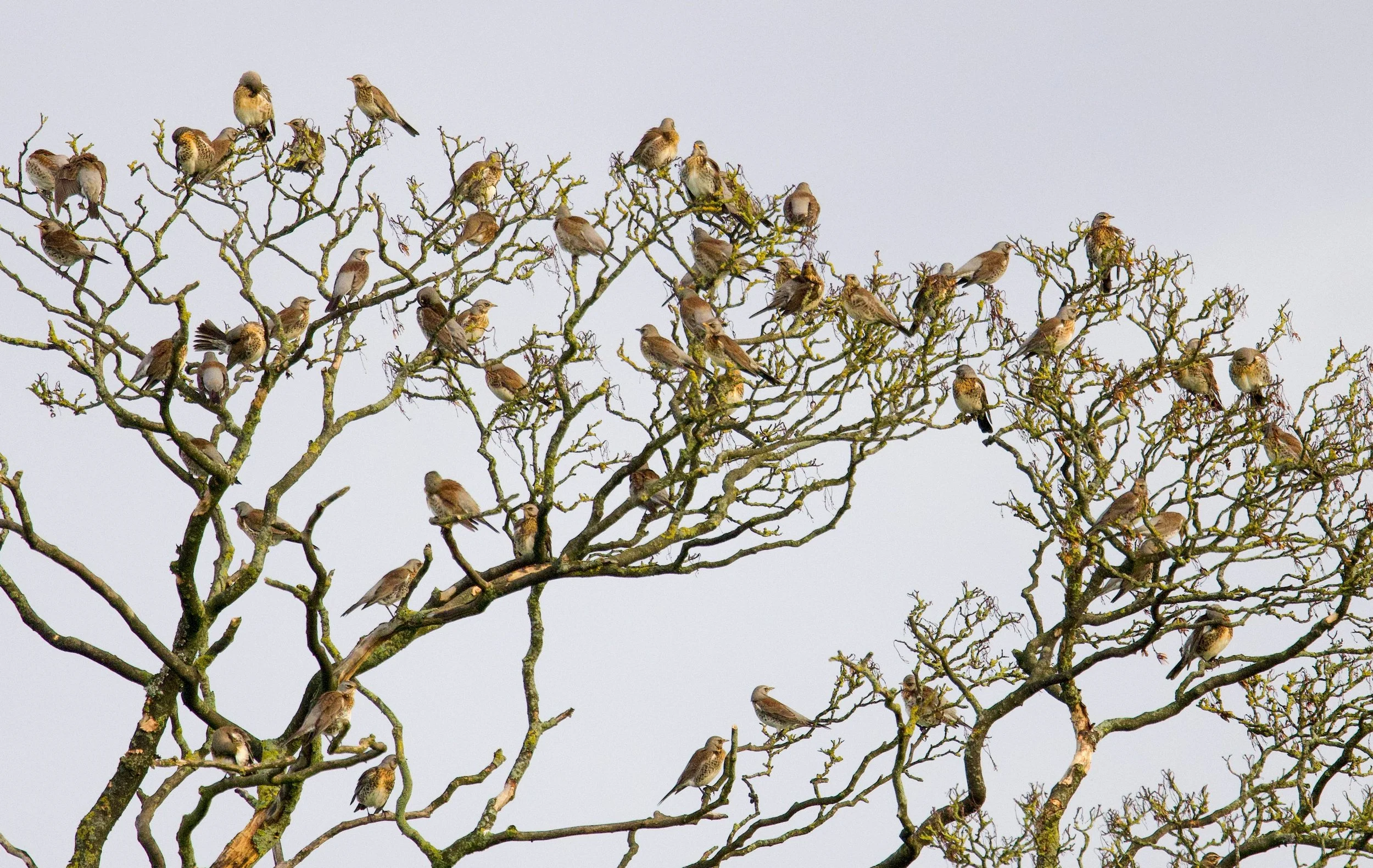The forgotten visitors
In this extract from Nature’s Wonders: Moments that Mark the Seasons, Encounter’s Jane Adams considers the autumnal arrival of fieldfares and redwings
They arrive unseen, and five months later, we hardly notice them leave. Yet each year an estimated 23 million redwings and fieldfares migrate to the UK from their summer breeding grounds as far away as Scandinavia and Russia. That’s nearly six times more birds than the number of swallows, house martins, sand martins and swifts that travel to our shores to breed in spring.
If they were tiny, nondescript birds, it might be easier to understand their unremarked arrival. But with the redwing’s distinctive rusty armpits, and the fieldfare’s grey hood and bold black tail plumage, neither is particularly camouflaged nor small.
In truth, it’s unfair to say no one sees them. Avid birdwatchers count and listen for them on vismig (visible migration) and nocmig (nocturnal migration) surveys, and they are also visible to meteorologists, who record them flying at high altitudes in vast flocks.
But for the rest of us, even those who live in more rural areas, they can go under the radar. One day the fields are empty, the next they’re full of redwings and fieldfares, and we just accept and mostly ignore them.
Neither are they birds that have inspired many writers or poets to put pen to paper. There’s a brief mention by Chaucer of the ‘frosty fieldfare’ in 1382 in The Parliament of Fowls, and John Clare alludes to ‘fieldfares chatter in the whistling thorn’ in his poem, ‘Emmonsails Heath in Winter’, but compared to the nightingale or cuckoo, they don’t play a leading role in English literature.
Folklore and myths surrounding these understated birds are also hard to find. Kentish fishermen recalled stories of ‘the herring spear’; a rushing sound heard on dark, still winter nights in the English Channel, which may or may not have been the wings of redwings whooshing overhead. In Suffolk, the early arrival of fieldfares was considered a sign of a hard winter. But surprisingly, for birds that have been part of our autumn and winter landscape for hundreds of years, these stories aren’t found countrywide.
A flock of fieldfares
Their mass arrival usually peaks around mid-October. And as they often migrate at night, you might hear the eerie ‘tseep’ of redwings passing overhead in the dark, even in the busiest of towns and cities. In more rural areas, new arrivals can often be spotted feeding in large flocks, like a river of birds, rippling and splashing across the fields, looking for worms and other invertebrates.
In late afternoon, before they roost in woodland and copses, birds often feed in the hedgerows. Fieldfares can be particularly territorial and like to guard favourite food bushes, such as holly and hawthorn. They may even fly towards you with a loud ‘chack-chack’ as a warning. They won’t hurt you, but with their outstretched angel-wings they might make you jump, and your heart skip a beat.
If it’s a cold autumn with hard frosts, redwings and fieldfares will often appear in gardens, orchards and parks, especially where there are windblown apples on the ground, or if food has been left out for them. If the cold weather continues, their numbers will often increase day by day, as food in the wild becomes harder to find.
Perhaps our general apathy towards them is because we don’t consider them ‘ours’, or don’t think of this country as being their true home. Now is the time to seek them out. Get to know and admire these plucky visitors. If they arrived with the swallows in spring, would we notice and cherish them more?
Nature’s Wonders: Moments that Mark the Seasons by Jane Adams is out now. You can order a copy here.


